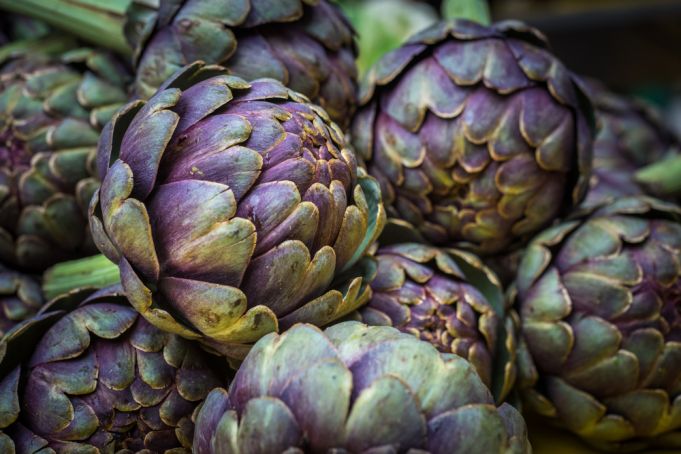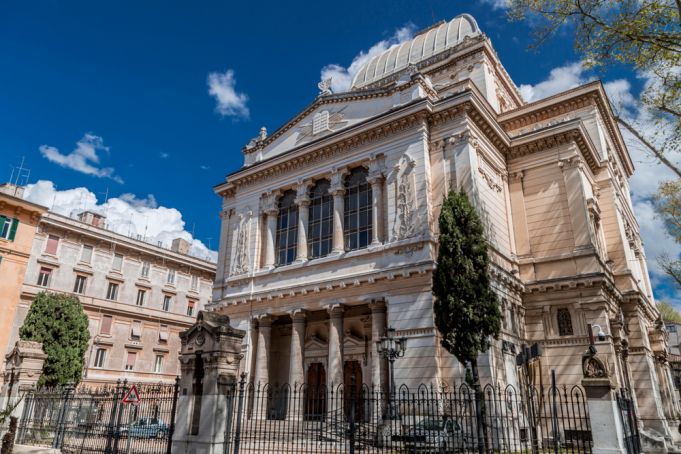Delicious visually as it is in taste, it is little wonder as to why carciofi alla giudia is one of the forefront contenders for the best Roman dish.
Whilst a lot is known about the best places to get it from, not a lot is known about its importance within the Jewish community.Lined with chalkboards saying ‘carciofi alla giudia’ (Roman-Jewish artichokes), I had little doubt in my mind that the main street in the Roman Jewish ghetto was the best place to sample and find out more information about the significance of the culinary delight.
Sitting down in one of the first restaurants I saw, I was delighted to find out that the price for one artichoke-filled plate covered not one, but two carciofi alla giudia. Afterall,who would not be happy with two, deep-fried, lightly-salted artichokes?
Also read:
The importance of Jewish Artichokes
As I sat there happily plucking at and eating the outer leaves of my ‘carciofo’, I temporarily forgot the aim of my mission: to find out its importance in the Jewish community.Snapping myself out of my glutinous distraction, I asked a member of staff what the importance was. To my dismay she replied she nor anyone else in the restaurant was Jewish, but helpfully suggested that I should check out the Jewish museum just a stones throw away.
I got up, paid and traipsed around the corner to check it out. As I walked in through the turnstiles I approached a friendly worker and asked him about the importance carciofi alla giudia.
His response was this: ‘Everyone who lives or works in this community is proud of their Jewish heritage. The carciofi alla giudia is something that symbolizes our Roman-Jewish cuisine and also something that our mothers, their mothers and their mothers before them cooked’.
Also read:
He also went on to suggest that the carciofi alla giudia could have also been seen as a comfort to the Roman-Jewish community particularly during times of oppression and segregation in Rome.Jewish Temple in Rome. Ph: ColorMaker / Shutterstock.com
The Fascist years
The oppression started to come to a head in recent history in Rome in 1936 when Mussolini began adopting anti-Jewish policies. Each anti-Jewish policy was countersigned by King Victorio Emanuele III of Savoy and included Jews not being able to own a radio, not being able to have ‘aryan’ housestaff and to be kicked out of high positions in society such as the army or public office. Interestingly enough, the expulsion of Jewish children and adults from public schools in Nazi Germany had happened two months after it had in Italy. Unfortunately, as we know from history, these fascist regime policies led to Italian Jews being deported to concentration camps.Also read:
Feeling that I was gathering more information, I was adamant to eat carciofi alla giudia by a person who was from the Jewish community. With fantastic reviews from the late chef Anthony Bourdain, who declared that “life is too short to get the wrong giudia artichoke”, I decided to take a trip to Nonna Betta.Where to eat the best Jewish artichoke
There I was fortunate enough to to converse with the owner of Nonna Betta, Umberto Pavoncello, about the humble artichoke dish.As I was sitting and soaking up the welcoming environment, I asked him what exactly is the cultural importance of carciofi alla giudia.
He stated that in the past, Jewish people used to receive food of poor quality. The deep-fried cooking guaranteed the hygiene of food as it killed all bacteria. When he mentioned that I could fully understand exactly why there was an outcry by the Roman-Jewish community in 2018 when the Chief Rabbinate of Israel declared carciofi alla giudea as not being kosher.
Umberto continued on to say that this dish was significant in the past as artichokes were one of the products the Jewish community had at their disposal as they grew in abundance in the countryside around Rome.

“The Ghetto in Rome for a significant amount of time was separated from the rest of the population. Being inside the ghetto enabled the enclosed community to preserve a lot of traditions and carciofi alla giudia is one”, he added.
Also read:
He then concluded that Nonna Betta (the name of the restaurant) was actually his maternal grandmother and echoed similar statements to the museum worker about the significance of Roman-Jewish recipes within the family.Shortly after the conversation with Umberto, a plate of carciofi alla giudia was placed in front of me, its outer leaves perfectly crisp and its centre superbly soft. Feeling enlightened about its significance, I found each bite to be more satisfying.
General Info
View on Map
The Jewish artichokes, one of the best known dishes of Roman cuisine
Lungotevere de' Cenci, 00186 Roma RM, Italy






















